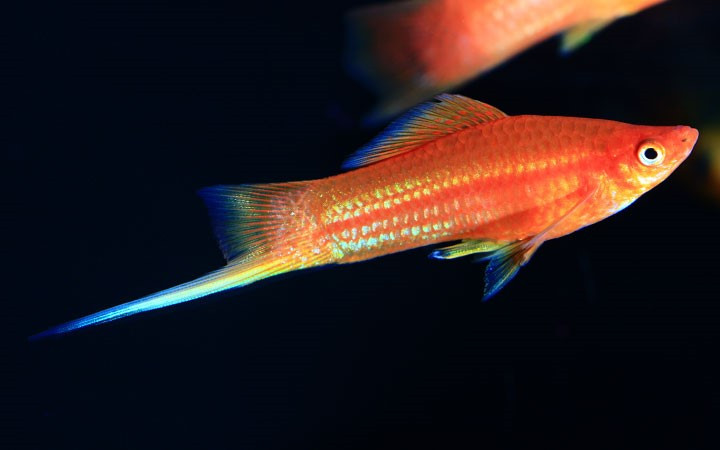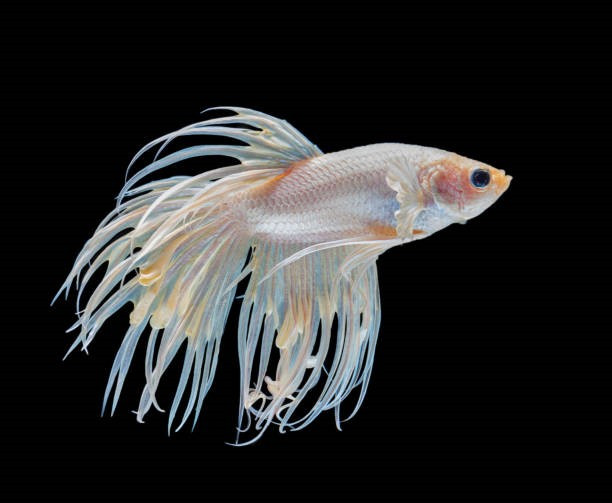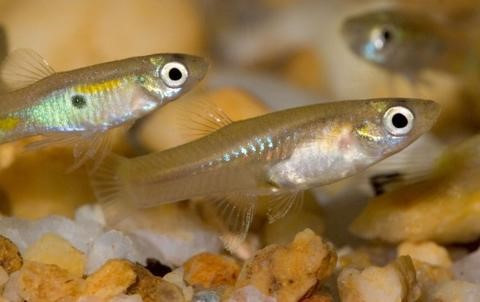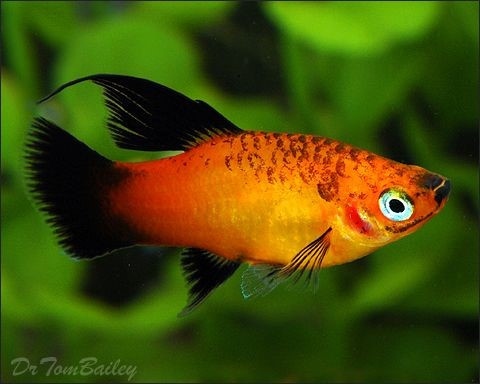
6 great fish types to keep as pets
Crown Tail Male Betta Fish
Betta fish, commonly referred to as Siamese fighting fish, are one of the most popular fish breeds. With its jewel-toned coloring and flowing fins, betta fish are a great addition to any fish-lover's home. They are well known for being territorial fish and 'fighting' if two are placed together or they see their reflections. Not all betta fish fight only the males. Female bettas can be kept together.

Betta fish grow to be no longer than 3 inches, typically with females being slightly smaller than the males. Their usual lifespan is 2-5 years. They have brilliantly colored fins, and various tail types. Both sexes have a torpedo-shaped body and an upturned mouth geared for eating at the surface. A unique feature of this species is the presence of a labyrinth organ that allows them to take oxygen from the atmosphere instead of from water, thus allowing them to survive in low-oxygen pools.
pH: 6.8 to 7.4
Water Hardness: Up to 20 dGH
Temperature: 75 to 86 F (24 to 30 C)
Diet: Live foods preferred, will eat flakes and frozen foods
Tetras
Tetras are members of the Characidae family that can be recognized by the adipose fin, a small rounded fin between the dorsal fin and tail. These fish have several bones that join the inner ear and swim bladder, which enhances the hearing of these colorful fish.

Tetras are beautiful fish. Most species have awesome colors and markings and some types of tetras also have interesting fin shapes. Looks are not all these tiny fish have going for them though, personality is just as important!
Tetra fish are a generally super peaceful species that get along with just about any other tropical freshwater fish that isn’t big enough to eat them.
Size: Up to 3"
Diet: Omnivorous
Tank Setup: Freshwater. Planted, but with plenty of swimming areas. Driftwood for security & to condition the water is also recommended.
Tank Conditions: 64-82°F; pH 5.0-8.5; dKH 1-20
Min. Tank Capacity: 10 - 30 gallons.
Guppies
Guppies are tiny tropical fish that live throughout the world. The Guppy fish, with their colorful designs and feathery tail fins, are favorites with people who keep freshwater aquariums. Guppies go by alternate names including rainbow fish and millionfish. They are called rainbow fish because of their colorful scales. The nickname millionfish refers to the breeding habits of the fish. A female can have 50 to 100 babies every month!

Guppies are small tropical fish that play a part in the fight against malaria. Mosquitoes are known carriers of this disease. To reduce the mosquito population, these fish have been released into bodies of water around Asia and other areas to eat mosquito larvae.
- Lifespan: 2 years
- Weight: Less than 1 gram
- Length: 0.6 - 2.4 inches
- pH Level: 6.8 to 7.8
- Water temperature: 72-82 °F (22-28 °C)
- Water hardness (dGH): 8-12
Platies
They are freshwater fish that belong to the Poeciliidae family. They are often referred to as platies or southern platy fish. Platy fish are native to Central America and Mexico.

A platy fish’s size varies depending on sex, environment, and species. They have flattened short bodies with fan-shaped tails and triangular heads. Males are smaller than females and have a gonopodium. Male platy fish have an average size of two inches, while female platy fish reach up to three inches in length. Platy fish are sexually dimorphic. They become dull when stressed or sick.
Platy fish come in a wide range of patterns and colors. Most platy fish are peaceful and get along well with fish that have similar temperaments. Platy fish are peaceful, social, and get along well with other fish. While not considered a schooling species, platy fish become more confident in groups of six. These fish are active and stay at the middle and top levels of the tank. Platy fish enjoy exploring and hiding among plants.
Tank should contain plants and lots of open space for platy fish to swim and release their energy. Platy fish can jump out of the tank, so a secure tank lid is essential.
Platy fish are omnivores and should be fed a varied diet of frozen and live foods, pellets, flakes, and vegetables.
Minimum tank size: 10 gallons.
Water type: Freshwater, with 25% –30% water changes every two weeks.
Tank size: Minimum 10 gallons for a group of five to six platy fish. Increase by 2 gallons per additional fish. Platy fish are active swimmers and require a spacious, elongated tank.
Water temperature: 70–77°F (21–25°C).
pH: Between 6.8 and 8.0.
Water Hardness: Opt for hardness between 10–28 dGH. Platy fish are used to hard water in the wild.
Swordtails
Swordtail fish (Xiphophorus helleri) are an ever-popular freshwater species that come from North and Central America. They are a lovely and popular freshwater species in the aquarium community. Due to their beauty and low-maintenance nature, these fish make great choices for beginners. They belong to the Poeciliidae family and are closely related to other common fish like the platy and guppy. Like others in the Poeciliidae family, these fish are prolific livebearers that are more than willing to spawn in captivity.

The most defining feature of the swordtail fish is the male’s caudal fin. The lower lobe is elongated, creating a sword-like protrusion that can be just as long as the rest of the body. Females don’t have the longer lobe.
Beyond that signature trait, swordtail fish have a very “standard” body type! They look strikingly similar to the Southern platy. Swordtails are sporting the same streamlined body, wide tailfin, pointy snout, and upturned mouth. The fish are widest where the dorsal and pelvic fins appear at the midsection.
The average swordtail fish lifespan is around three to five years. These are medium-sized freshwater fish. The average swordtail fish size is around 5.5 inches in length when fully grown.
A 15-gallon tank is best for a single swordtail fish. They can be kept in a 30-gallon aquarium or larger. Larger tanks are always better for groups or if you’re planning on keeping a bunch of community fish together.
Water temperature: 65°F to 82°F (75 to 79 degrees seems to be the sweet spot)
pH levels: 7.0 to 8.4 (slightly alkaline)
Water hardness: 12 to 35 dGH (very hard)
Molly fish
Mollies are usually black or gold and sometimes with the front half mostly yellow to gold and the rare half black. This species is also called gold panda molly, and like others in the family, they can adapt to a variety of salt levels in the aquarium.

To keep your molly fish happy and healthy, add them in a planted fish tank with the water temperature anywhere from (6.5 to 7.5).
Moreover, make sure your aquarium water is hard (about 10 to 20 dGH) with elevated salt level, and you may also want to add a teaspoon of salt per gallon of water for the fish’s optimum health.
A full-grown molly fish will usually be around 3 inches or 7 cm long, the males, whereas the females are a bit larger and can grow to around 4 inches or 10 cm long.
Mollies require a tank size anywhere from 20-gallons to 30 gallons, and because they are omnivores, feed them both meaty foods and plant matter, particularly algae-based foods.